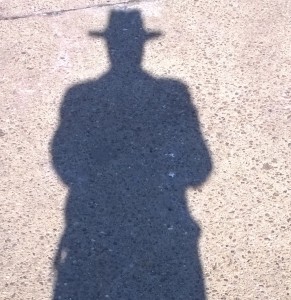In July 1954, after the Vietnamese victory at the battle of Dien Bien Phu, the Geneva Peace Conference convened. Those in attendance included delegations from the northern and southern sections of Vietnam, the United States, Communist China, French, British, and the Soviet Union. Great Britain and the Soviet Union acted as co-chairs of the Geneva Peace Conference, and the International Control Commission (ICC) was responsible for preparing progress reports and moderating issues as they arose. The success of the ICC’s work depended on the cooperation of the governments of North and South Vietnam.
Some important points were decided at the conference. Vietnam was to be divided into a northern and a southern section. The partition was to be in place for only two years, after which elections were to be held to reunite the country under one elected leader. North Vietnam’s capital was in Hanoi, while South Vietnam’s capital was in Saigon. The independent states of Cambodia and Laos were also established.
Another point from the conference was the agreement that no foreign troops could enter Vietnam during the two-year period of division. Ho Chi Minh reluctantly signed off on the agreement, though he believed it cheated him out of the spoils of his victory over the French.
Zhou En-lai, Chairman Mao political “right-hand man” and the leader of the Chinese delegation, encouraged the division of Vietnam in an attempt to hold the burgeoning power of Vietnam in check. Keeping the Southeast Asian nations fragmented made them more susceptible to Chinese influence, thereby enabling the Chinese to increase their power and influence in the region. The Chinese remembered the lessons from their imperial past. However, neither the southern section of Vietnam nor the United States would sign the final conference agreement. Additionally, neither South Vietnam nor the US believed the French would stay in Vietnam until the elections, scheduled to be held no later than 1956. Though both the US and the new government of South Vietnam had refused to sign the Geneva agreements, the US declared it would “not use force to disturb the Geneva settlement.” Instead, it would seek “to achieve unity through free elections, supervised by the United Nations to ensure that they are conducted freely.”
China’s People’s Liberation Army (PLA) trained Vietnamese troops in China and provided military supplies, then moved two hundred thousand of their own troops to the Vietnamese border. This would be a key issue throughout the Vietnam Conflict
Meanwhile, Ho Chi Minh was unwilling to sit idly by while the peace conference accords played out. He wanted to take advantage of his momentum from the defeat of the French. He pushed communist ideology merged with a strong nationalism. He gathered a wide following in the North and formed guerilla groups, which would ultimately become the National Liberation Front (NLF), more commonly called Viet Cong, whose purpose was to reunite the country under communist rule.
The US did not sit on their hands either. They feared the spread of communism throughout southeast Asia (the Domino Theory—one falls to communism and they all fall), and knew both North Vietnamese and Communist China would try to push their influence on the South.
However, there were conflicts within the US government, as well as divisions within organizations. The CIA analysts, with an extensive working knowledge of Indochina, were aware that the US Joint Chiefs of Staff and the Army were not willing to do more than assist the French. Much of their concerns were based on US military studies which concluded that Indochina’s location and terrain were not suited for effective US military action. The Joint Chiefs concluded, “From the point of view of the United States, with reference to the Far East as a whole, Indochina is devoid of decisive military objectives, and the allocation of more than token US armed forces to the area would be a serious diversion of limited US capabilities.”
President Eisenhower had a different opinion than the Joint Chiefs. He did not believe the French would stay engaged in the region. Even when the Joint Chiefs of Staff advised the President that getting involved in Vietnam was devoid of decisive military objectives. However, Eisenhower maintained his belief in the Domino Theory and insisted the US couldn’t sit idly by while South Vietnam was overtaken by communists.
After the Geneva Peace Conference, the US government scrambled to develop a policy that would, at the least, save South Vietnam from the communists. Enter two of my favorite real people to write about: Colonel Edward G. Lansdale of the CIA, who would lead a team of agents; and Lieutenant Colonel Lucien Conein, a CIA agent in Saigon who was to begin a series of covert operations against North Vietnam. Lansdale and Conein had a flare that any author would love to exploit. An author doesn’t have to use hyperbole when writing about them—they are naturals for intrigue and drama. Lansdale has been a featured character in all of my novels thus far, and Conein appears in my Vietnam series.
When politicians meet to discuss how to implement “Communist Containment” it is often our servicemen and women who are put in harm’s way without winnable objectives. Containment with rules of engagement was never a friend to our service men and women.The situation is compounded when politicians try to micro-manage the conflict. As happened during the Vietnam era, our servicemen and women become Pawns—mere game pieces to be played by politicians.

